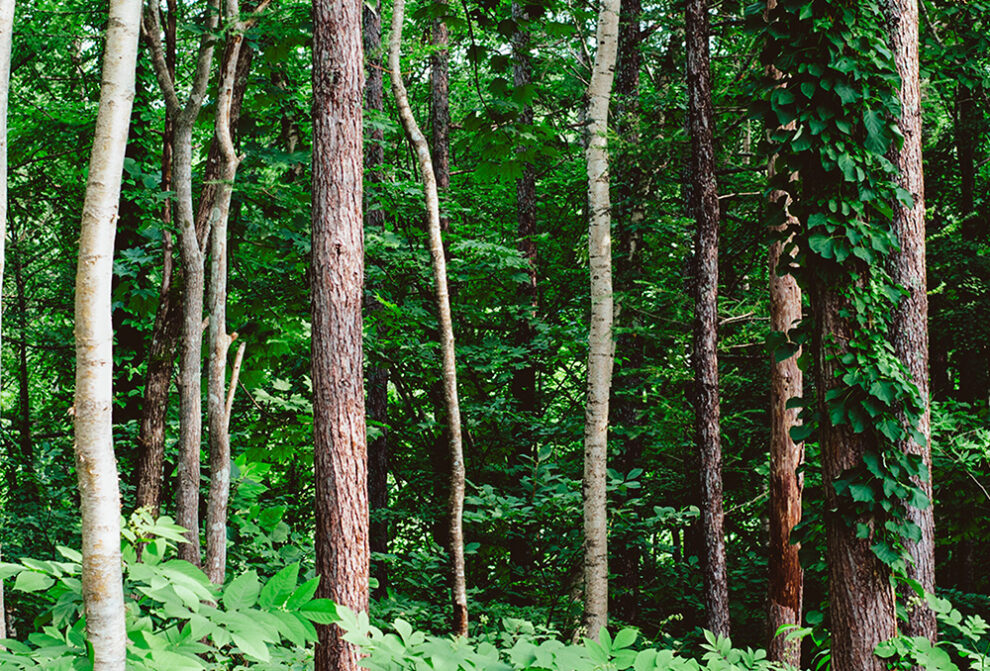
CountShoots Launches UAV and AI for Accurate Pine Shoot Counting

Revolutionizing forestry
‘CountShoots’ unveils advanced UAV and AI techniques for precise slash pine shoot counting.
In southern China, the genetically improved slash pine (Pinus elliottii) plays a crucial role in timber and resin production, with new shoot density being a key growth trait. Current manual counting methods are inefficient and inaccurate. Emerging technologies such as UAV-based RGB imaging and deep learning (DL) offer promising solutions. However, DL methods face challenges in global feature capture, necessitating additional mechanisms. Innovations like the Vision Transformer and its derivatives (e.g., TransCrowd, CCTrans) show potential in plant trait counting, offering simplified and more effective approaches for large-scale and accurate data processing. This technological evolution presents an opportunity for research in automated new shoot detection in slash pines, utilizing these advanced DL methodologies.

In July 2023, Plant Phenomics published a research article entitled “CountShoots: Automatic Detection and Counting of Slash Pine New Shoots Using UAV Imagery”. This study introduces the Slash Pine Shoot Counting Network (SPSC-net), a model based on CCTrans, designed for counting new shoots of slash pine. It incorporates a feature pyramid module for accurate counting.
In the detection of slash pine trees, models like YOLOv5, Efficientnet, and YOLOX were compared, using a 0.5 threshold for tree identification. YOLOX demonstrated superior precision, recall, and average precision(AP), especially at a higher 0.75 threshold. In contrast, Faster-RCNN showed the lowest performance. Manual counting of 26 test images revealed that YOLOX had a lower false detection rate and EfficientNet had minimal missed targets. YOLOX excelled in complex and overlapping target scenarios. For the detection of new shoots, the study compared balanced and unbalanced OT frameworks, while assessing different transposition cost matrices. The perspective-guided model displayed the best performance, validating the efficacy of nonequilibrium OT for density regression. SPSC-net achieved the lowest MSE and MAE among all models, outperforming DM-Count, CSR-net, and MCNN. Scatter plots and density maps demonstrated the high prediction accuracy of the SPSC-net. On this basis the study developed CountShoots, a system of extracting and counting slash pine. Implemented on the Flask framework, it features modules for user interaction, model loading, plant extraction, and shoot counting. The process involves uploading images, extracting plant data, counting shoots, and providing feedback on the results, all streamlined for user convenience. The study confirmed the effectiveness of the SPSC-net in multiscale image processing of slash pine. YOLOX and SPSC-net were compared with other models, demonstrating superior detection and counting accuracy. SPSC-net’s self-attention mechanism and feature pyramid fusion enable detailed and semantically rich feature extraction. Despite its success, there are limitations to consider, such as potential obstruction from the canopy layer and restriction on UAV flight height.
In conclusion, the research developed a comprehensive pipeline using SPSC-net and YOLOX for accurate slash pine shoot counting and crown detection, offering a robust tool for forestry research and genetic breeding of slash pine.
References
Authors
Xia Hao1, Yue Cao1, Zhaoxu Zhang1, Federico Tomasetto2, Weiqi Yan3, Cong Xu4, Qifu Luan5, and Yanjie Li5*
Affiliations
1College of Information Science and Engineering, Shandong Agricultural University, No. 61, Daizong Road, Taian 271018, Shandong Province, China.
2AgResearch Ltd., Christchurch 8140, New Zealand.
3Department of Computer Science, Auckland University of Technology, Auckland 1010, New Zealand.
4School of Forestry, University of Canterbury, Private Bag 4800, 8041 Christchurch, New Zealand.
5Research Institute of Subtropical Forestry, Chinese Academy of Forestry, No. 73, Daqiao Road, Fuyang, Hangzhou 311400, Zhejiang Province, China.
About Yanjie Li
He is an associate professor at the Research Institute of Subtropical Forestry, Chinese Academy of Forestry. His research interests include genetic breeding and germplasm resource evaluation, mainly focusing on the rapid estimation and evaluation of high-throughput forest germplasm resource phenotypes in important timber species in subtropical areas such as Pinus wetland, Pinus torch pine and Sassafras.
Journal: Plant Phenomics
DOI: 10.34133/plantphenomics.0065
Method of Research: Experimental study
Subject of Research: Not applicable
Article Title: CountShoots: Automatic detection and counting of slash pine new shoots using UAV imagery
Article Publication Date: 10-Jul-2023
COI Statement: The authors declare that they have no competing interests.
Media Contact
Ping Wang
Nanjing Agricultural University The Academy of Science
pingwang@njau.edu.cn
Office: 86-843-99610












